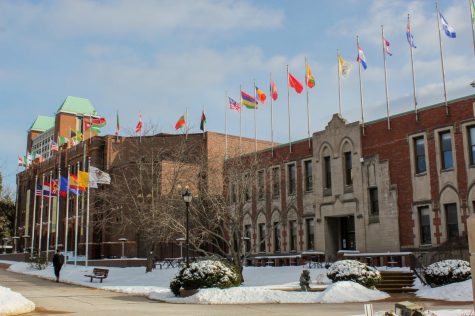How the COVID-19 Pandemic has Affected the Environment— And What We Can Learn From It
This year marked the fiftieth anniversary of Earth Day, a day meant to serve as a reminder to protect our planet and raise awareness of environmental issues. Amidst the current global health crisis, the typical Earth Day celebrations looked very different than usual. But in the absence of Earth Day rallies, gatherings and events, there were other things worth celebrating.
In New Delhi, India, where residents are accustomed to a gray haze and breathing in some of the dirtiest air in the world, the sky is now clear and blue. In Venice, Italy, the water in the canals runs clear in the absence of boat traffic, with fish visible just below the surface and swans returning. In South Africa, a photographer captured a relaxed pride of lions stretched out sleeping in the sun on a quiet road.
The silver lining of the COVID-19 pandemic is the overwhelmingly positive environmental response.
“The closing down of heavy industries has had a beneficial effect on air and water quality in many parts of the world,” said David Crossley, Ph.D, professor of geophysics in SLU’s Department of Earth and Atmospheric Sciences. “Air quality has improved due to the significant reduction in transportation—especially passenger air travel and personal cars—and in processing plants causing air and water pollution. The skies and rivers are returning to their more natural pollution-free state.”
Although COVID-19 and climate change may appear to be two different challenges, they share key similarities and are inextricably linked. Air pollution can increase the risk of respiratory and heart disease, making individuals more susceptible to COVID-19. High density living situations and global interconnectedness have not only increased carbon emissions worldwide, but have opened a pathway for the virus to transmit and spread rapidly.
Ultimately, both COVID-19 and climate change are global issues that require cohesive government intervention, backed by science. The question is: what can society learn from the environmental impacts of the COVID-19 pandemic?
Transportation is the single largest source of greenhouse gas emissions in the U.S. Yet during the pandemic, we’ve learned how to sacrifice face-to-face interaction and rely on virtual communication—and many companies and organizations have done so with relative success. When the nation begins to relax restrictions and open up, we should implement our ability to work virtually and prioritize only essential travel. And it’s not just transportation—global supply chains, city layouts and how we invest in sustainable efforts need to be radically redesigned.
“From a societal point of view, the pandemic illustrates perfectly the problem of responding to a global crisis,” said Crossley. “Even with abundant evidence of virus problems in January this year, many governments did little to prepare until two months later, wasting critical time.”
The delayed government response proves we must scrutinize preparedness efforts taken by political leaders, both local and national, to fully understand the effectiveness of their response. The pandemic shows that listening to scientists versed in medical issues and crises, considering economic consequences and forgetting party politics are all essential when trying to protect everyone from a common enemy, whether that be COVID-19 or climate change.
In a virtual Earth Day meeting, 17-year-old Swedish climate activist Greta Thunberg stated, “If the coronavirus crisis has shown us one thing, it is that our society is not sustainable. If one single virus can destroy economies in a couple of weeks, it shows we are not thinking long-term and taking risks into account.”
The COVID-19 pandemic has proved how listening to scientific experts is essential when trying to flatten the curve. Let’s use this time inside to start listening to science when it comes to combating climate change.
Your donation will support the student journalists of Saint Louis University. Your contribution will help us cover our annual website hosting costs.












